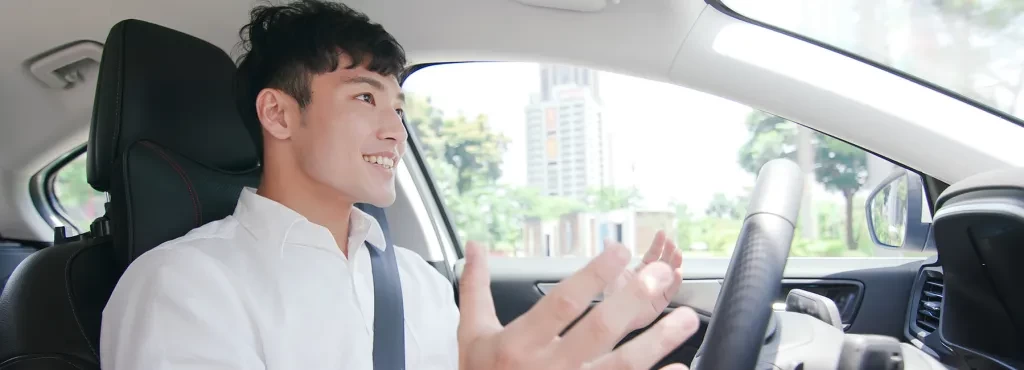“What does it mean to be a smart driver?” It means being aware and mindful of what you do while driving and controlling your attitudes and behaviors. It simply takes YOU.
Keep a two-three second gap
Rear-end collisions are one of the primary causes of incidents. Tailgating, that is driving too close to the car in front of you, is the root cause. Drivers could reduce their risk of a crash by up to two-thirds if they just added one more second to their default following distance. A three-second gap gives you a better view
of the road, more time to react, and more space to brake or steer out of the way if there’s a hazard on the road. So pick a fixed object in the road ahead and count it out. Double it (at least) in bad road conditions.
Scan, scan, scan
Keep your eyes moving as you drive, looking for hazards ahead and to each side of the road. Use your mirrors and instrument panel to help build a complete picture. Don’t forget about blind spots, and try to anticipate what other road users will do. And take advantage of ‘clues’ within your environment, such as road signs, schools, parking spaces – these can help you assess what hazards you might encounter as you approach.
Check your speed.
Always be mindful of how fast you’re going. Train yourself to check your speedometer regularly and remember, the faster you go, the more you reduce your ability to react to hazards. Maximum speed limits are set for good conditions, so adjust your speed when conditions change.
Limited view? Slow down!
You should always be able to stop within the distance that you can see to be clear ahead of you. Slow down when you can’t see well ahead, because of a hill, curve, vehicle or building. At night, if you can’t stop within the area lit up by your headlights, you’re going too fast.
Watch your blind spots – and everyone else’s.
Blind spots are areas you cannot see by looking through your windows or mirrors. They exist all around your vehicle–make sure you know where they are. Adjust your mirrors before you drive to increase what you can see. Turn your head to check over your shoulder when setting off, backing up, changing lanes, passing others, turning or opening your door at the roadside. Remember, you can get in other drivers’ blind spots, too. Know when you are, and get out as quickly as you can
Watch your blind spots – and everyone else’s.
Blind spots are areas you cannot see by looking through your windows or mirrors. They exist all around your vehicle–make sure you know where they are. Adjust your mirrors before you drive to increase what you can see. Turn your head to check over your shoulder when setting off, backing up, changing lanes, passing others, turning or opening your door at the roadside. Remember, you can get in other drivers’ blind spots, too. Know when you are, and get out as quickly as you can!
Change lanes defensively.
There is a lot to consider when you change lanes–blind spots, speed of other vehicles, signaling correctly and locating a safe gap. Any place you want to move into may be appealing to others, too. Check blind spots before you signal your intention and check again as you’re about to make your move. Signaling your intentions is the only way you can communicate with other drivers; turn signals, hazard lights, and to a lesser extent, your horn let other road users know what you are about to do. Give a heads up early enough for other drivers to process your moves and react. Tap your brakes if traffic is slowing ahead to alert the driver behind you.
Know your escape routes.
An escape route is a pre-considered plan you can take advantage of if a dangerous situation arises. Because your environment is constantly changing, you need to constantly plan. The easiest way to maintain an escape route is to leave a safe following distance–but consider the space cushion around the sides of your vehicle, too, especially when driving on a multi-lane highway. You should leave an escape route when stopped in traffic too!


